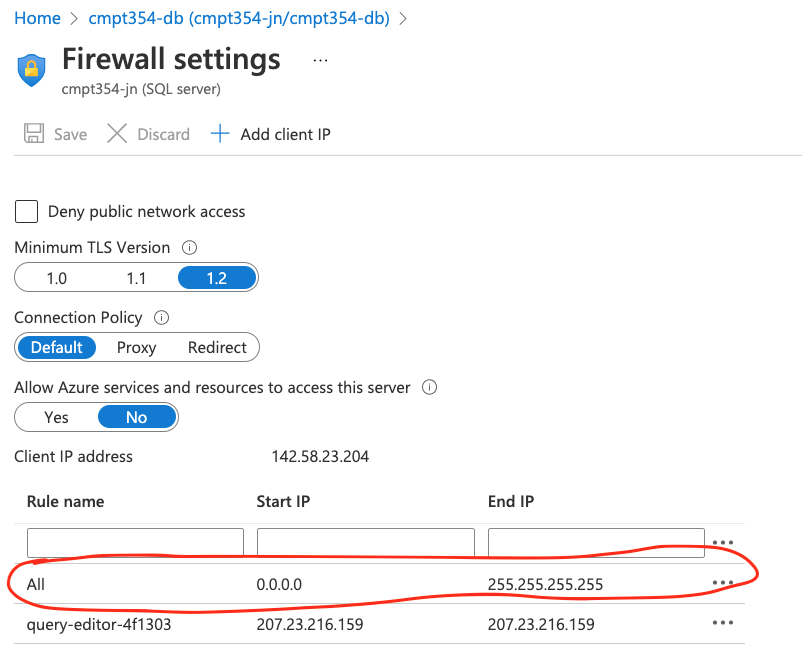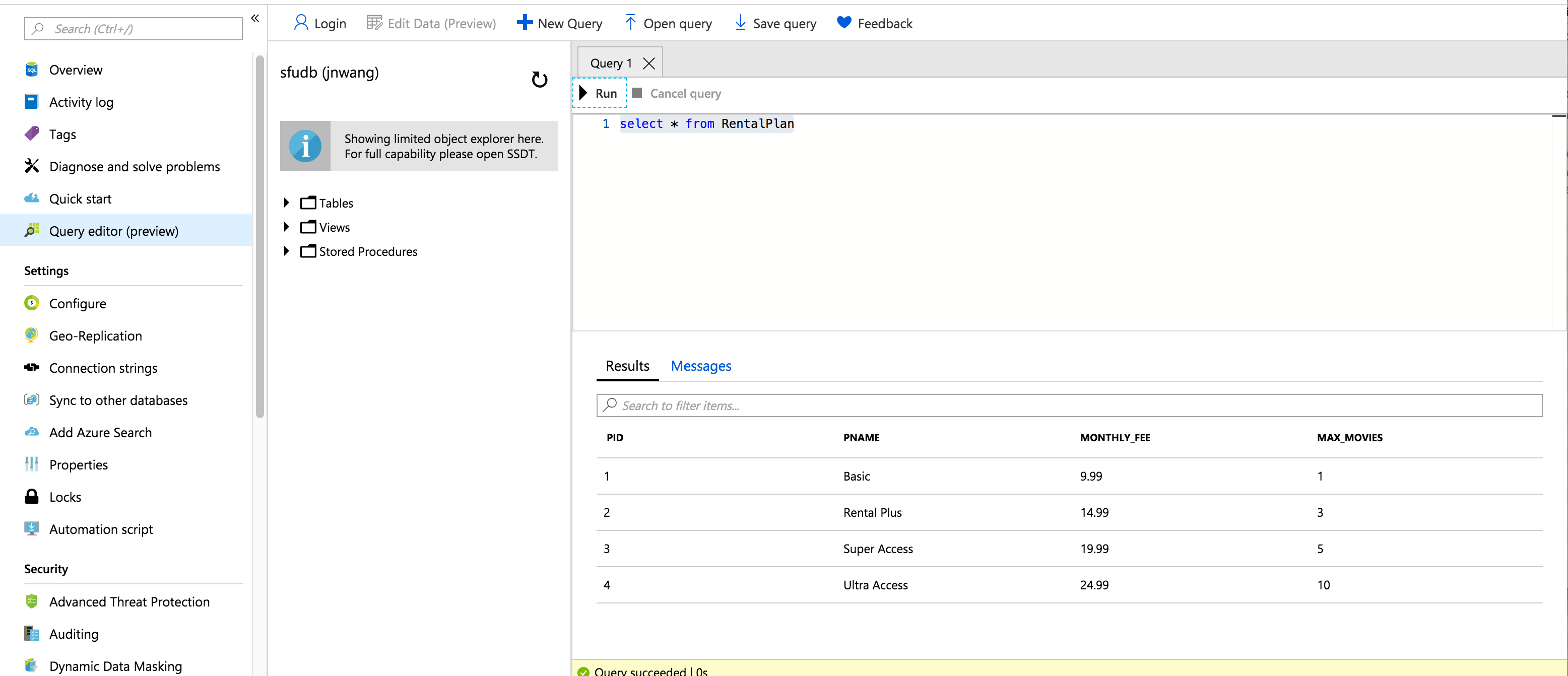Step 1. Follow the lecture to create an empty SQL database (named VideoStore) on Azure.
Step 2. Since TA needs to check whether you succeed, please go to Firewall settings and add a rule that allows any IP to access your Azure services (see the screenshot below) .

Step 3. Install pyodbc on your computer
Step 4. Install the ODBC driver (see Prerequisites (MacOS, Windows, or Ubuntu))
Step 5. Open connect_db.py in the A5 folder, and replace ODBC_STR with your connection string. Open a terminal and type python connect_db.py. You will see:

Remarks
You need to install Python SQL Driver
If you encounter any other difficulty, please ask the questions on Piazza.
You need to submit
connect_db.pyfor this task
